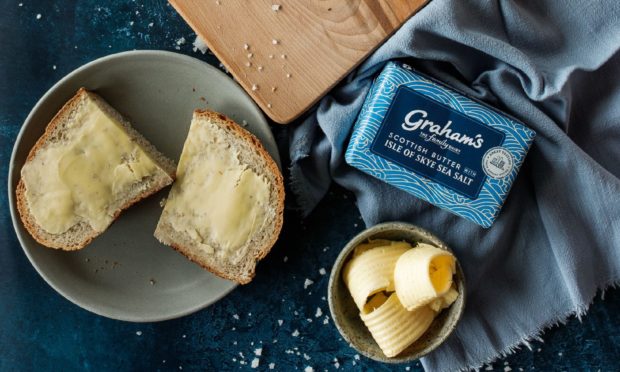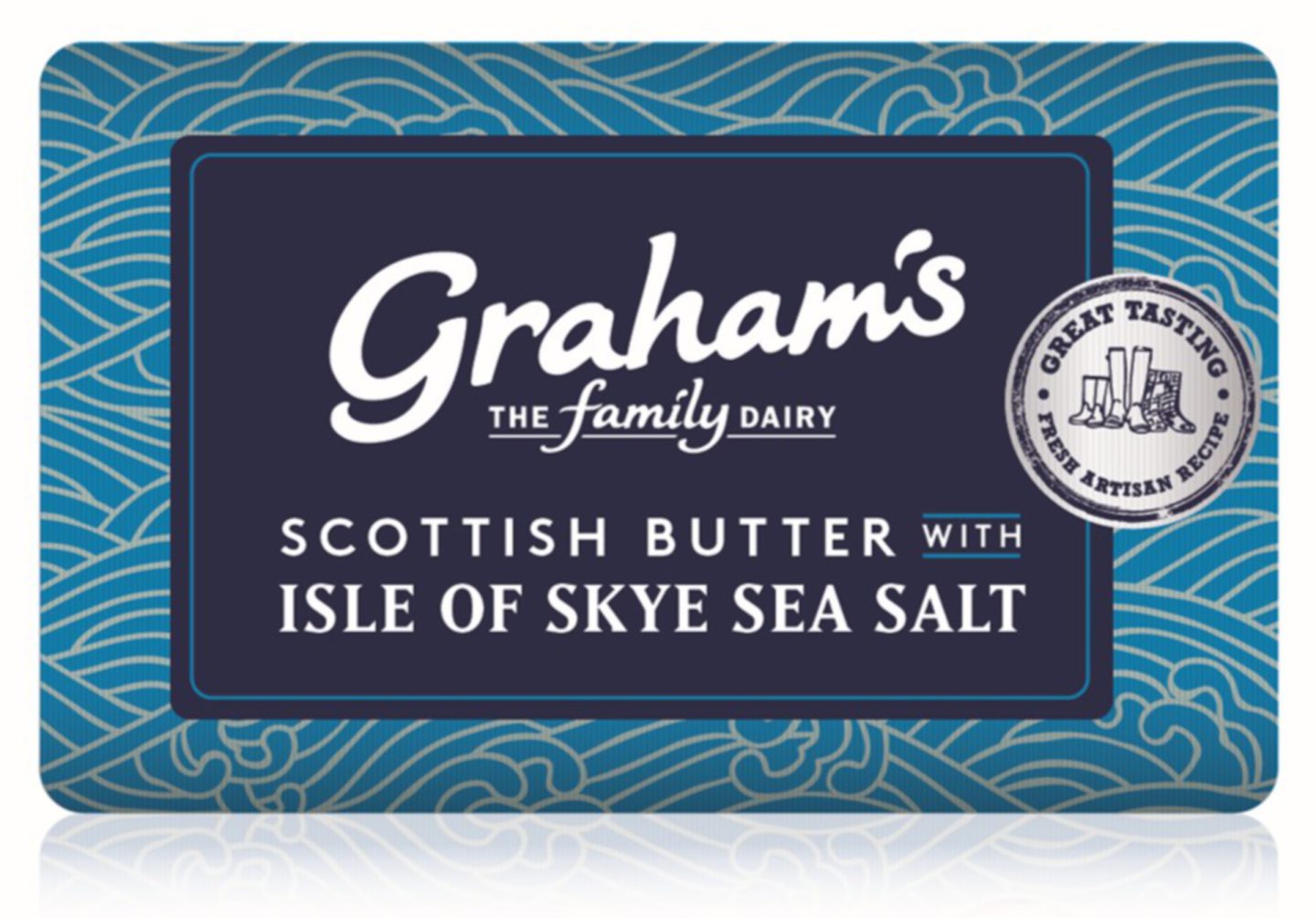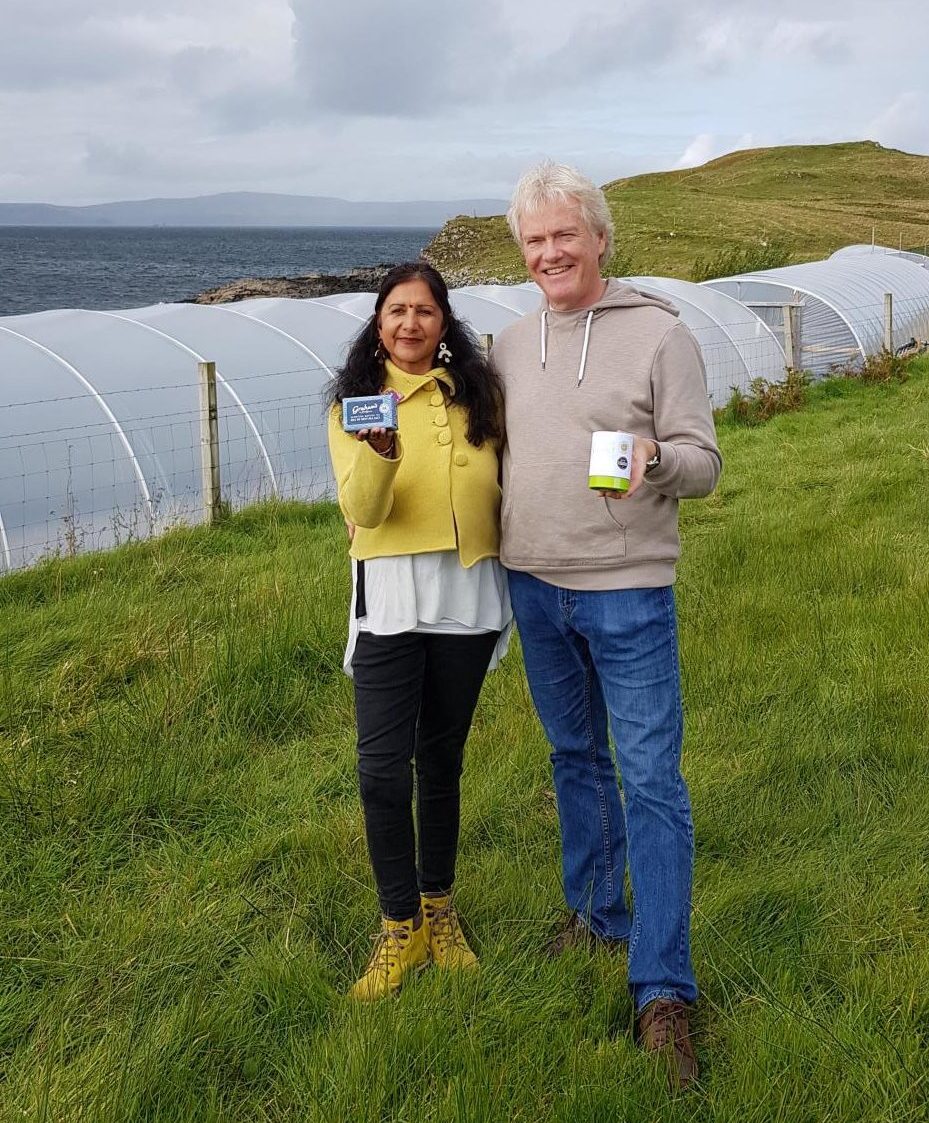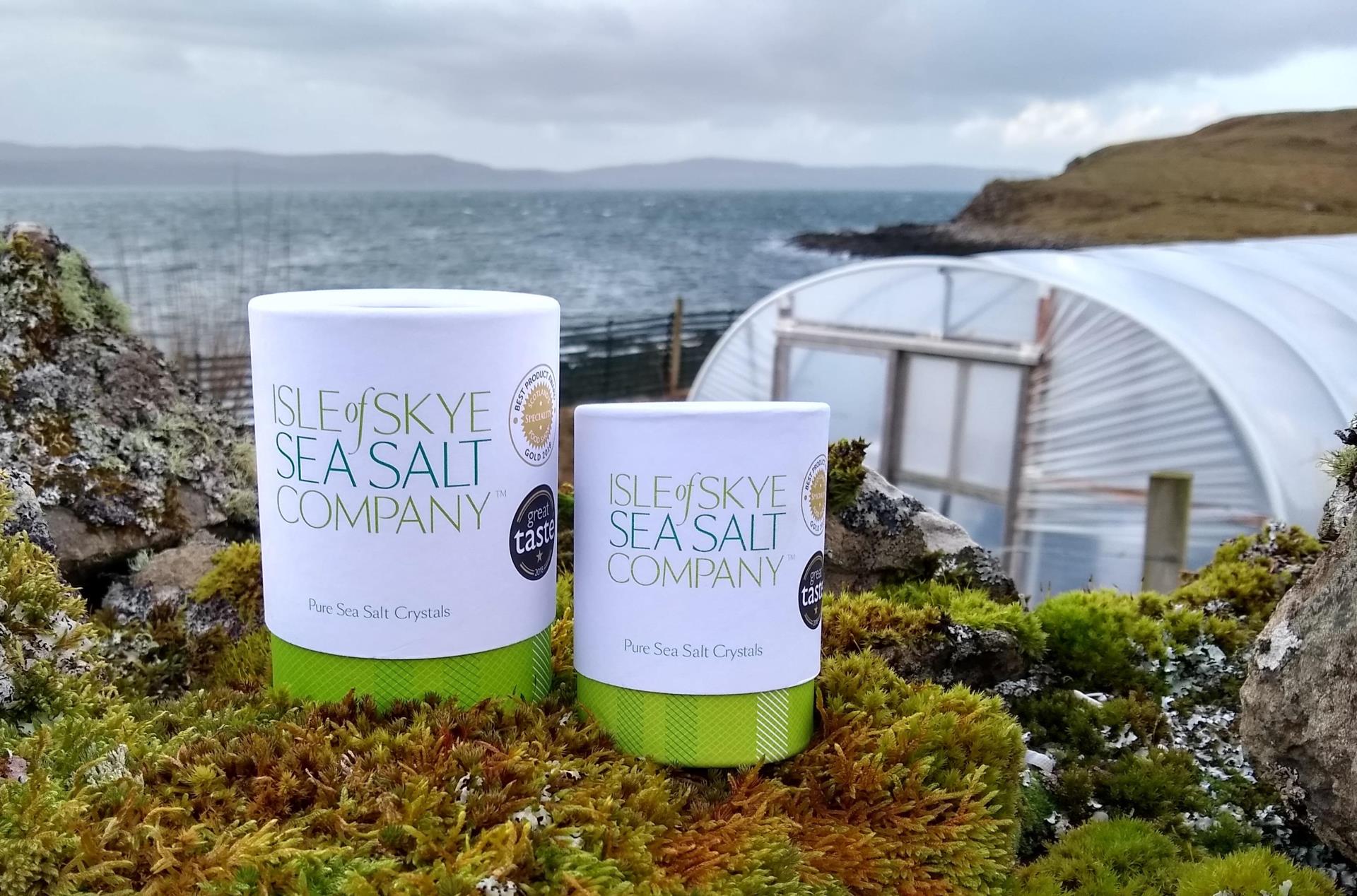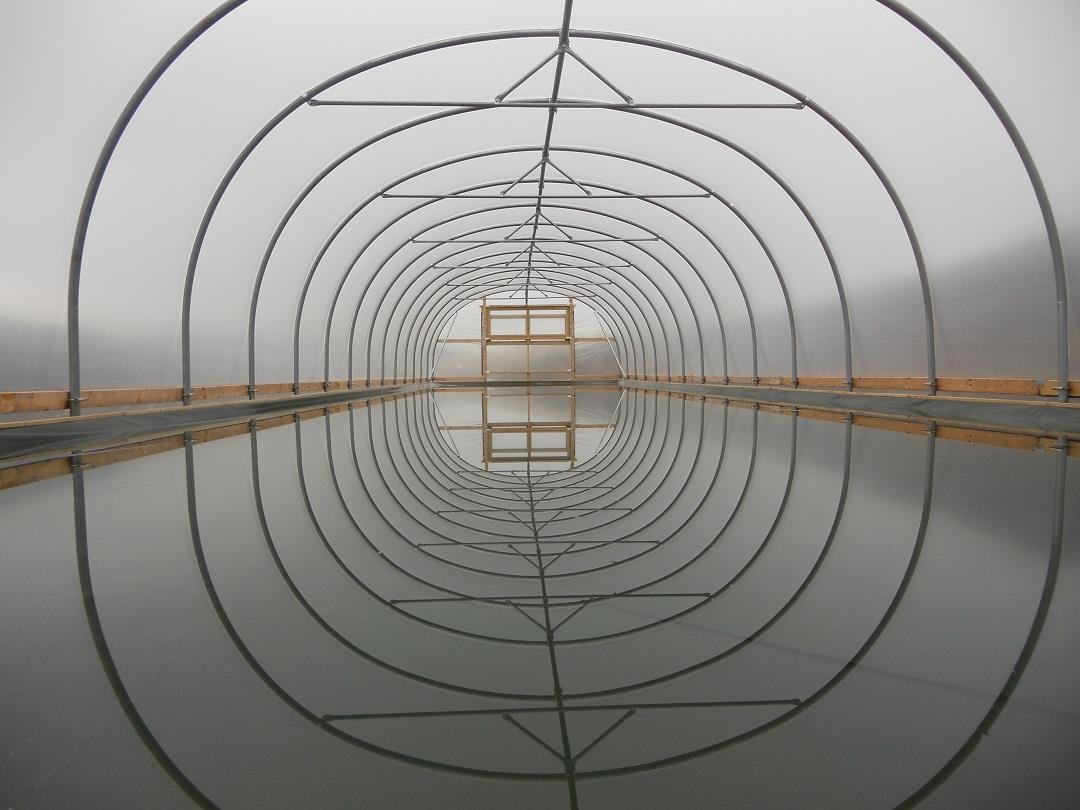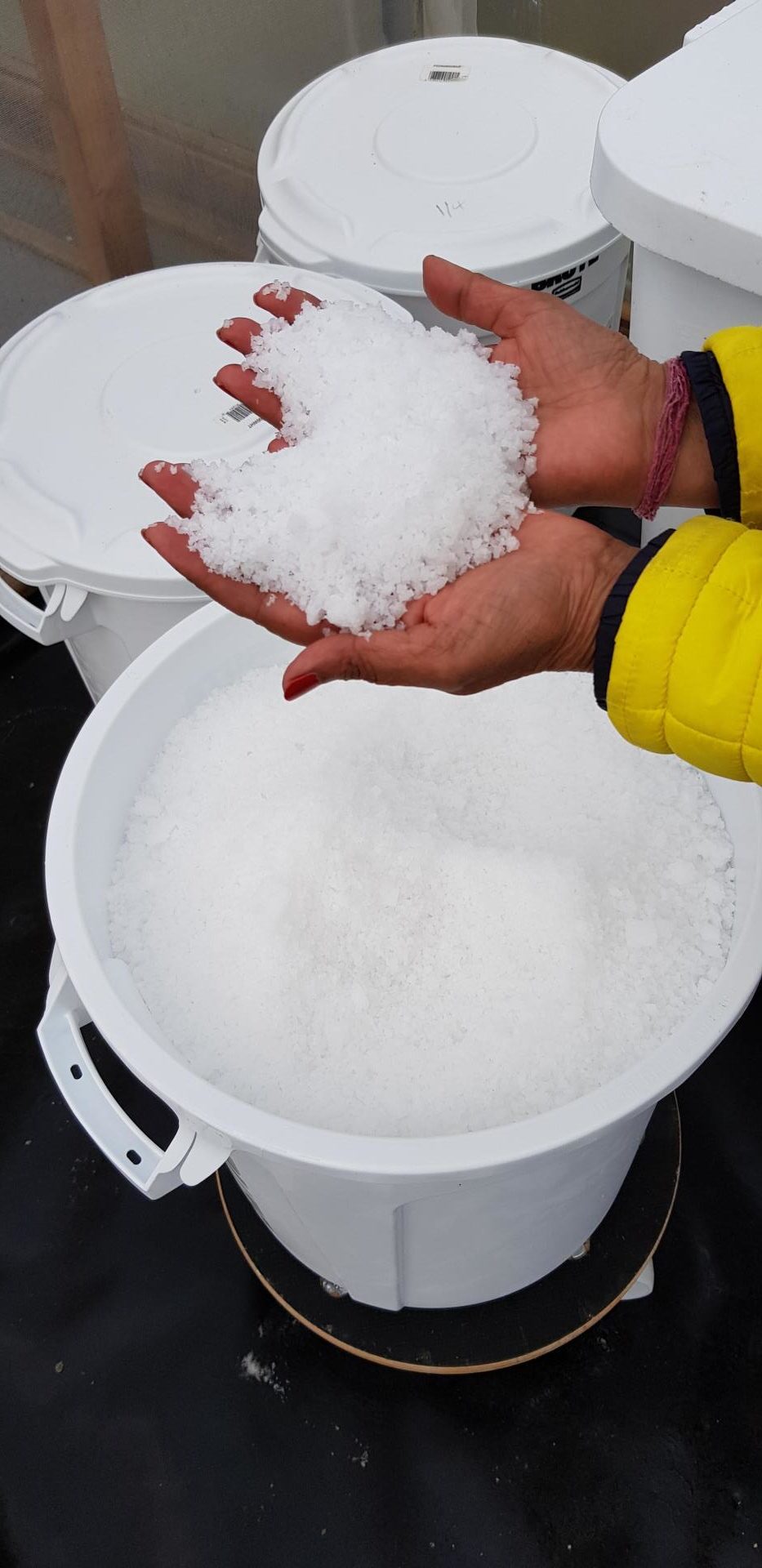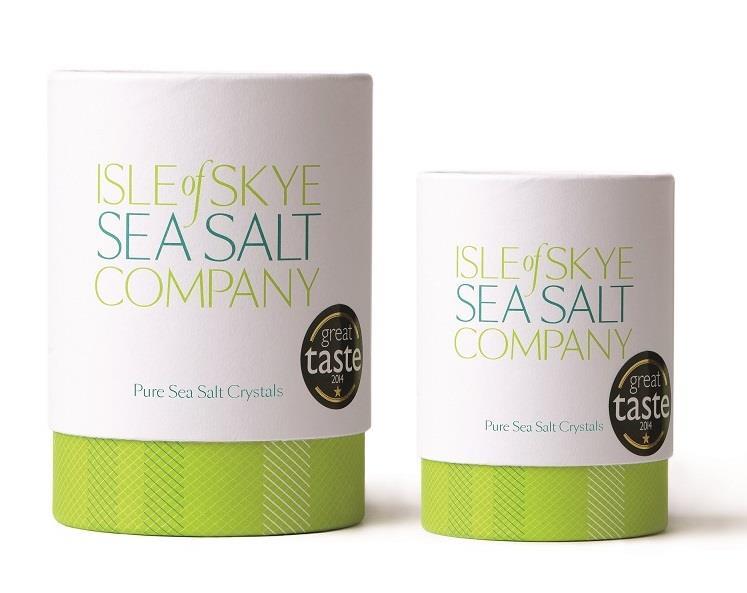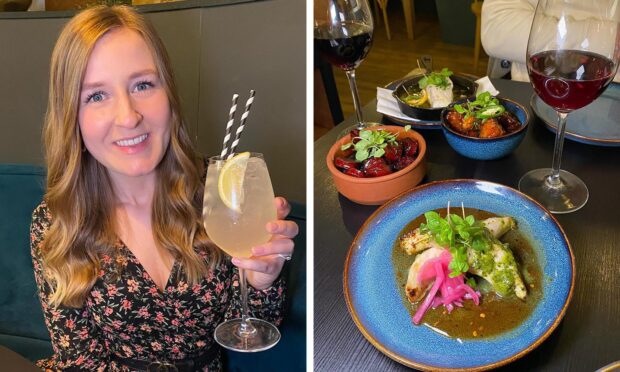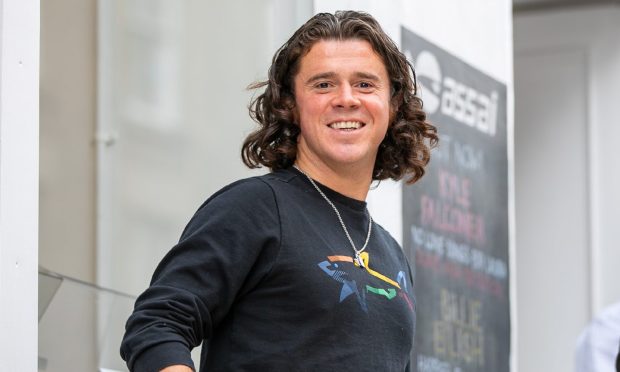Two Scottish food businesses have collaborated to bring a new product to market with loch to larder ethos.
One of Scotland’s leading dairy firms has teamed up with an artisan producer to bring a new sea salt butter to the market.
Graham’s The Family Dairy, which is based in Bridge of Allan, and Isle of Skye Sea Salt Company have developed the product together which is now available in Spar stores across the country.
Coming from the first salt company on the Isle of Skye in more than 300 years, the butter will be made with its unrefined sea salt and milk from Graham’s 100 Scottish farmers.
Collaborating for the first time, Meena and Chris Watts were delighted to be approached by a company the size of Graham’s and have spent months working with the team in an effort to get the product to market.
Meena said: “Graham’s actually approached us a while ago and had this idea of offering a salted butter. The idea really came intro fruition at their end and we’ve really just gone for it.
“The butter is made at their premises and we send the salt over to them. We had some of their senior staff come over a while back and they got to see the whole process of how we work and the salt tunnels. They got to see how pure it is.
“It is brilliant for us as we are a small artisan company and to be in partnership with a producer like Graham’s is great. It will be in Spar and will be launching into Scottish Tesco’s next week which is very exciting. We also work with Cocoa Chocolate, too, and it is great to see how others use our salt in their products.”
Watch how the salt is made…
Sustainably creating their unrefined product using natural resources, Meena and Chris are proud to bring salt production back to the island which was last documented to be made in the early 1700’s on the Sleat peninsula.
Where is all started
The husband and wife team moved to the Isle of Skye 13 years ago and established the company in 2011, Since then they have used their experience in sustainable development projects to bring the salt company to life.
Meena said: “We moved to the Isle of Skye around 13 years ago but before that both of us had lots of experience in both people-related sustainable development projects and eco-build features, too. Chris was one of the founding members of one of the first companies specialising in sustainable development, Beyond Green, when we lived in London.
“For us our underlying beliefs and values have always been being involved in sustainability.
“When we moved to Skye we didn’t want to come with fixed ideas. Our experience of living in numerous places, we wanted to take it slow in being introduced to the community and really just went with the flow. We bought the cottage which we used to go on holidays to and were there for a bit. We then decided to build our own eco-home and we worked with workmen to build it. Chris managed the project and he was one of the first people to introduce eco features to social housing which was very innovative at the time.
“We thought we’d rent out the cottage for people holidaying but it is actually quite expensive to live on Skye and we knew we’d have to do something else to top up our income. This led to a few dinner events with friends talking about what we might do, and one led onto sea salt. We kind of forgot about it and one day I just heard Chris say ‘sea salt’ as he was looking out onto the sea loch. It really was a eureka moment.
“We started talking about it and Chris went away and did huge amounts of research over a year and a half to see how we could produce something that was totally sustainable. We did this right from the beginning as it was really important to us. We spent a lot of time and experimented quite a bit. It took a while for us to find the right packaging and we wanted a contemporary Scottish feel to it.
“A few of our friends joined the company initially, but we are now the sole owners of it again.”
The process
Researching and developing the idea, Chris was adamant he wanted the business to be as sustainable as possible and uses natural elements like the sun, water and wind to make the salt.
Producing through the warmer months of April to September, Chris devised a plan to protect the harvest from the Scottish elements – including rain – by using poly tunnels to ensure he could successfully make salt on the island.
He said: “We chose the site because it is on the loch shore and is at a very wide point on the loch so the water is very clean. The loch itself has very high quality water. We take the water out at high tide when it is at its freshest. Essentially I manoeuvre myself along some rocks and throw the hose into it. The pump then pumps the water into a filter and we filter down to about 25 microns which is below eyesight level. The water going into the poly tunnels is really clean.
“The process is essentially the sun heating the poly tunnel which has a pond of water on the base of it, and the sun heats the water, it begins to evaporate and wind blows through the poly tunnel and clears the saturated air so the cycle can begin again. It is a continuous cycle and we do it through the April to September months when there is enough heat from the sun to do so. We have quite a lot of wind on the west coast, there’s usually a breeze always going through it. It is very weather dependent so if it is very sunny we can get a harvest in 10 to 12 days. And for cooler times it could be three to four weeks.”
With a usual harvest generating a few hundred kilos of fresh, unrefined sea salt, the single stage evaporation process is unique to the firm, with many across the UK using vacuum evaporation or vacuum distillation instead.
As a result, Chris has ensured all of the minerals and elements sound in the sea are retained in the product.
He added: “We have three operation ponds and each of them will produce a couple of hundred kilos in each harvest. It just depends on how much water and we don’t measure it exactly. A few thousand litres goes into each pond and we get the salt when it has evaporated. We are a very small producer and make around two tonnes a year.
“In a sense we were transporting a skill from a hot country to a cold country. You make salt in the tropics by evaporating with the sun, but you can’t do that here without covers because of the rain and we need to generate the heat in an enclosed environment.
It is very different to how other salts in the UK are made. Usually it is vacuum evaporation or vacuum distillation for more factory-based products whereas ours is raw and refined sea salt. We evaporate the sea into the salt crystals. There’s no filtering other than what we do initially to get bits of seaweed out. There’s no refining of it and just a single stage evaporation.”
While the Covid-19 pandemic continues to be a challenging time for many, Meena and Chis are grateful for the support they receive from loyal customers and have numerous accolades under their belt to showcase the firm’s continued success.
Meena said: “Even during this time of Covid-19 where there’s nervousness, we continue to get very steady orders and that motivates us. We still get lyrical letters from our customers saying how much they love it. That is super motivating at times like this.
“We won the Scotland Food & Drink Excellence Award in 2015 and that’s when we knew we were onto something special. James Martin’s TV programme got in touch and we got great coverage from them – it took around six weeks to film six minutes. We got Great Taste Awards in 2014 and 2018 and received a gold Scotland Speciality Food Award 2018 and won an environment award in 2014, too. We’ve done two TV features with BBC 2 and Channel 4 so they will hopefully be aired early next year.
“We are very involved in what we do and we started off thinking this would be something we could top up our income with, but in reality, we’ve just channelled everything back into the business. You have to be really committed to it and give your heart and soul to it.
“Our pure eco-friendly sea salt resonates so well with the natural beauty of Skye as a brand. We produce a top-quality Scottish product loved by chefs and food lovers across the country and are very excited that Graham’s latest butter now includes our sea salt.”
For more on Scottish food producers…
Holy smokes: Producing perfect fish is in the DNA of Billy and Colin
